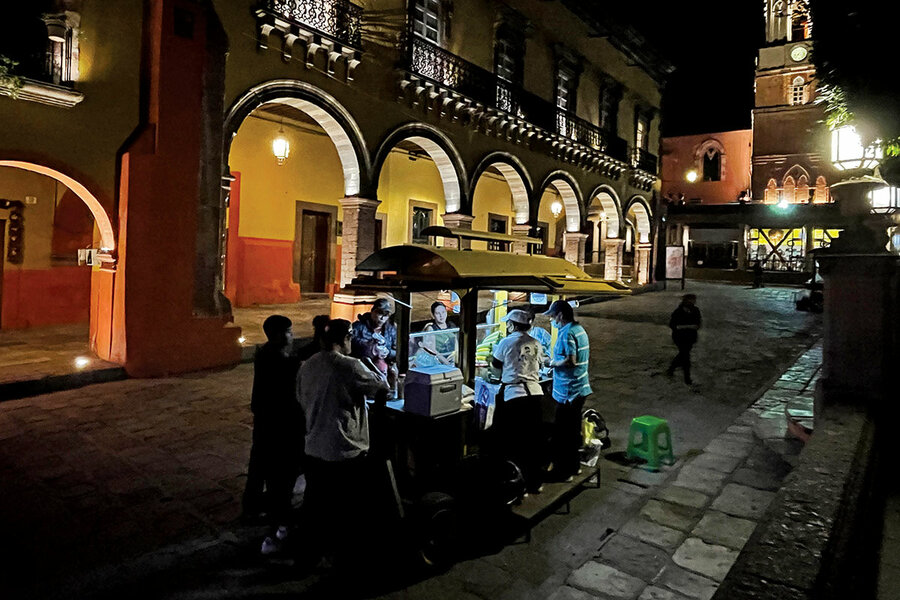In Mexico, street food brings communities together
Loading...
| Mexico City
Tacos sold from baskets strapped onto the backs of bikes. Steaming sweet potatoes served hot off the cart. These are just some of the sights and smells that color Mexico’s vibrant street food culture.
It’s the informal, homemade flavors that make food stalls and street vendors a mainstay of Mexican food.
Why We Wrote This
A story focused onFood can be a great equalizer, whether across town or across cultures. In Mexico, grabbing a quick bite to eat from street vendors is more than a convenience. It’s a an act of communion.
Historians point to pre-Hispanic tianguis, or traveling markets, as the root of customary street dining here. The tradition was enriched at the turn of the 20th century when Mexicans flocked to cities during industrialization, and brought with them a demand for quick, affordable food – and flavors of the pueblos they left behind.
Today, most Mexicans, regardless of economic means, can point to a favorite taco counter or grilled-corn vendor. There’s delight in dining alongside strangers amid the bustle of daily city life.
Click on the “deep read” button above to explore the full photo essay.
Tacos sold from baskets strapped onto the backs of bikes and steaming sweet potatoes served hot off the cart make up some of the unique sights and smells of Mexico’s vibrant street food culture.
The country has gained international attention for its fine dining in recent years, landing numerous restaurants on The World’s 50 Best Restaurants list. And traditional Mexican cuisine – defined not only for its iconic ingredients like heirloom corn, chiles, and beans, but also for the way in which the food is grown – was added to the United Nations’ list of intangible cultural heritage.
Despite this growing international attention, it’s the informal, homemade flavors that make food stalls and street vendors a mainstay of Mexican food.
Historians point to pre-Hispanic tianguis, or traveling markets, as the root of customary street dining here. The tradition was enriched at the turn of the 20th century when Mexicans flocked to cities during industrialization, and brought with them a demand for quick, affordable food – and flavors of the pueblos they left behind.
Today, most Mexicans, regardless of economic means, can point to a favorite taco counter or grilled-corn vendor. There’s delight in dining alongside strangers amid the bustle of daily city life.
Provecho!













